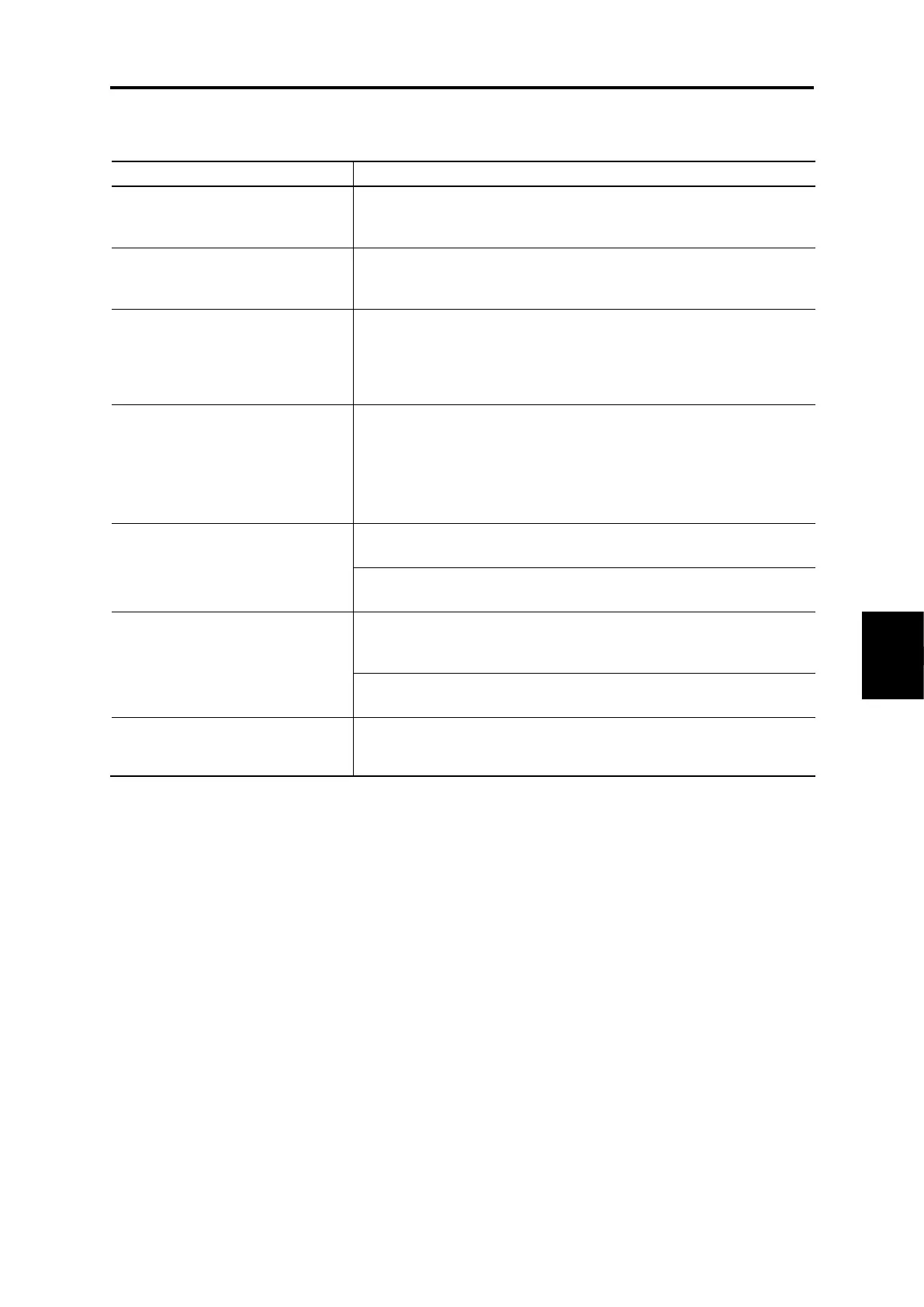6.3 If an Alarm Code Appears on the LED Monitor
6-25
[ 36 ] 0lU Inverter overload
Phenomenon: Temperature inside inverter has risen abnormally.
(1) The surrounding temperature
exceeded the inverter's mode
limit.
Measure the surrounding temperature.
➔ Lower the temperature (e.g., ventilate the panel where the inverter
is mounted).
(2) Excessive torque boost
specified (F09*)
Check whether decreasing the torque boost (F09*) does not stall the
motor.
➔ If no stall occurs, decrease the F09* data.
(3) The specified acceleration/
deceleration time was too short.
Recalculate the acceleration/deceleration torque and time needed for
the load, based on the moment of inertia of the load and the
acceleration/deceleration times.
➔ Increase the acceleration/deceleration times (F07, F08, E10 to E15,
and H56).
Measure the inverter output current.
➔ Reduce the load (e.g. Use the overload early warning (E34) and
reduce the load before the overload protection is activated.) In
winter, the load tends to increase.
➔ Decrease the Carrier frequency (function code F26).
➔ Enable overload prevention control (H70).。
(5) Ventilation paths are blocked.
Check if there is sufficient clearance around the inverter.
➔ Change the mounting place to ensure the clearance.
Check if the fin is not clogged.
➔ Clean the fins.
(6) Cooling fan's airflow volume
decreased due to the service
life expired or failure.
Check the cumulative run time of the cooling fan. (See Chapter 3 “3.4.5
Reading maintenance information”.)
➔ Replace the cooling fan.
Visually check that the cooling fan rotates normally.
➔ Replace the cooling fan.
(7) The wires to the motor are too
long, causing a large leakage
current from them.
Measure the leakage current.
➔ Insert an output circuit filter (OFL).
The explanations for function codes with an asterisk (*) are limited to motor 1. If using motor 2 to 4, replace
with the relevant function codes in Chapter 5 "Table 5.3-21 Function codes to be switched".

